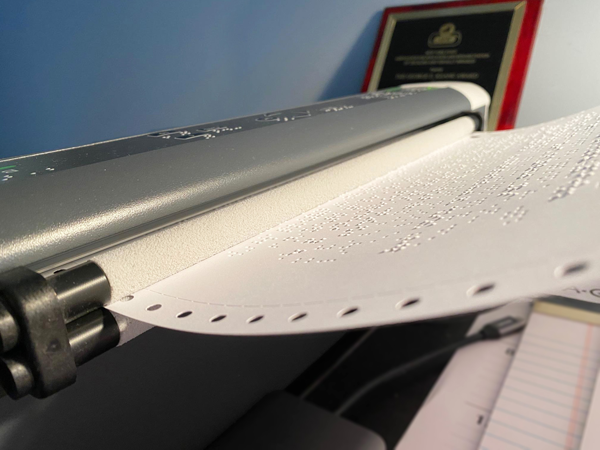![Dutchess BOCES Teacher John Kelly Creates Braille Books For Visually Impaired Students [PIC] Dutchess BOCES Teacher John Kelly Creates Braille Books For Visually Impaired Students](https://www.dcboces.org/sites/default/files/dcboces/images/spc/John_Kelly_with_printer.png)
For John Kelly, not being with his students poses a particularly unique challenge; he teaches blind and visually impaired students. But, the 29-year teaching veteran is making it work.
Last Tuesday morning, he created Braille books and made print copies for a child and her family at his Orange County home. Later, he dropped the materials off for her in Poughkeepsie.
“Normally I work one-on-one with a student close to 50 percent of the day,” he said.
Depending on a students’ needs, Kelly teaches them how to read and write in Braille, how to make technology accessible using speech commands, and ensure their classroom teacher has the needed materials.
He prepared the Braille materials at his home with equipment he purchased as a backup in case a machine at BOCES or a child’s home school district broke down.
“It was a blessing in this situation,” he said, adding that he is one of a six-person team at Dutchess BOCES that works with visually impaired students. Each teacher is making similar adjustments to ensure remote learning happens.
“John is not only a dedicated teacher, he is incredibly passionate about how his services will impact student growth,” said Karyn Lange, Coordinator of Related and Itinerant Services. “We serve approximately 30 students in seven component school districts, in addition to students at Salt Point Center and those who receive instruction in the home.”
The materials Kelly produced were a book, several readers, and other items, so the student could practice special Braille rules and contractions at home.
“I have given parents detailed instructions on what to do along with a large box of materials in Braille for the student and in print for their parents,” he said. The box includes manual Braille writer paper so the student can keep up with their daily journal.
Remote instruction can be difficult, but technology helps.
“Parents periodically send pictures of the work and I will provide corrections, edits and tell them what is right. I’ll mark it up and send it back,” he said. He may also speak on the phone directly with the student he’s working with. He depends a lot on parents to facilitate at-home learning for younger students.
Another part of his job, serving as an orientation and mobility specialist, is even more challenging in these times, he said. In this role, he helps students with visual impairments learn how to navigate their surroundings be it through the use of a long cane, walker or other device. Not being there physically makes it difficult.
“What I try to do is maintain contact with the student. We’ll talk over the phone and talk about their travel needs at home or in the community. I’ll give them tips,” he said. Some things can be done by video chat if there’s an adult present to help the child.

